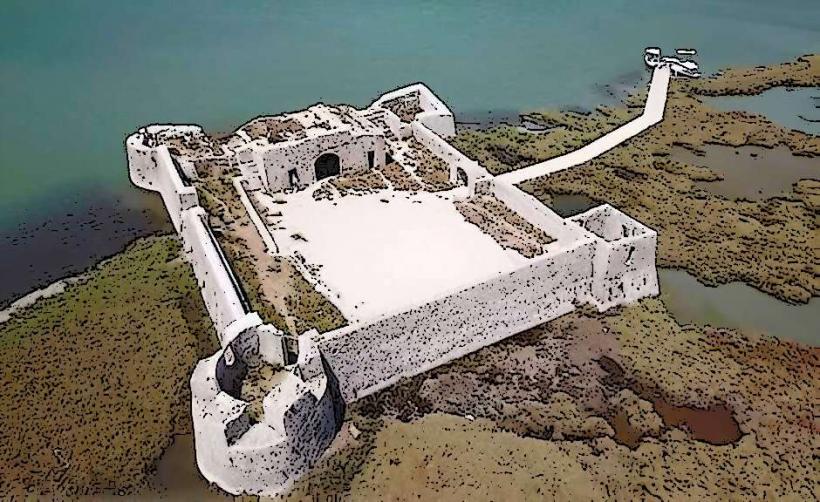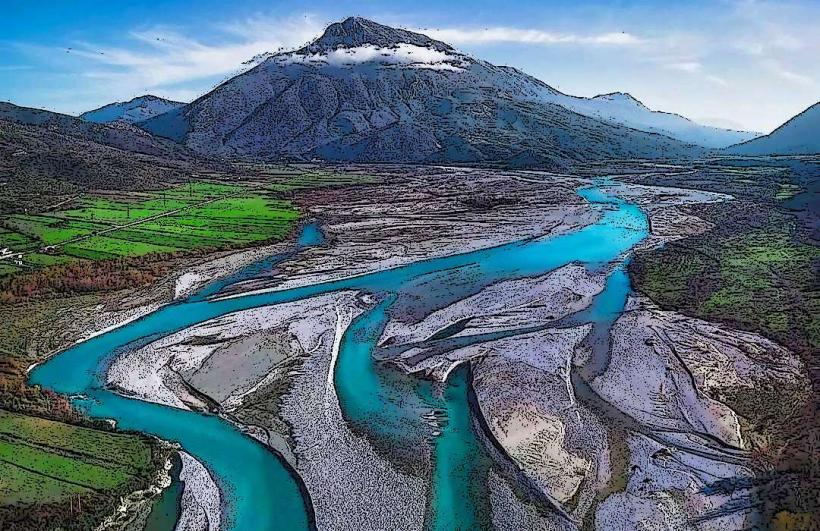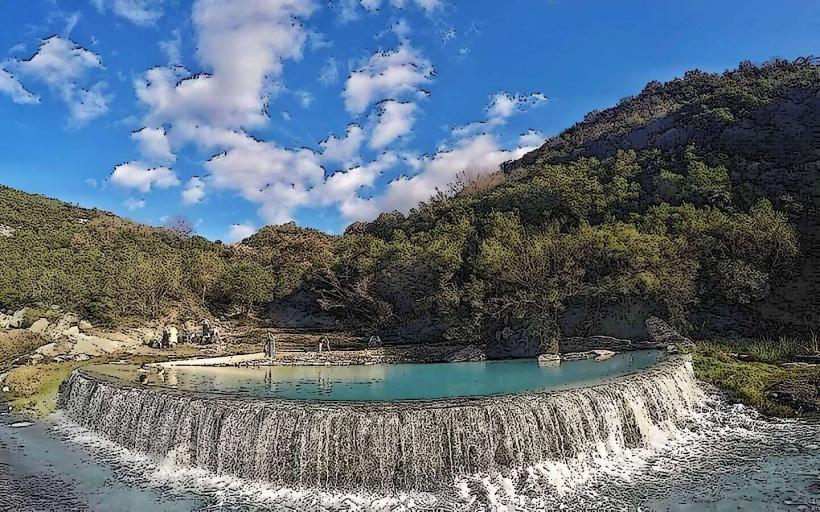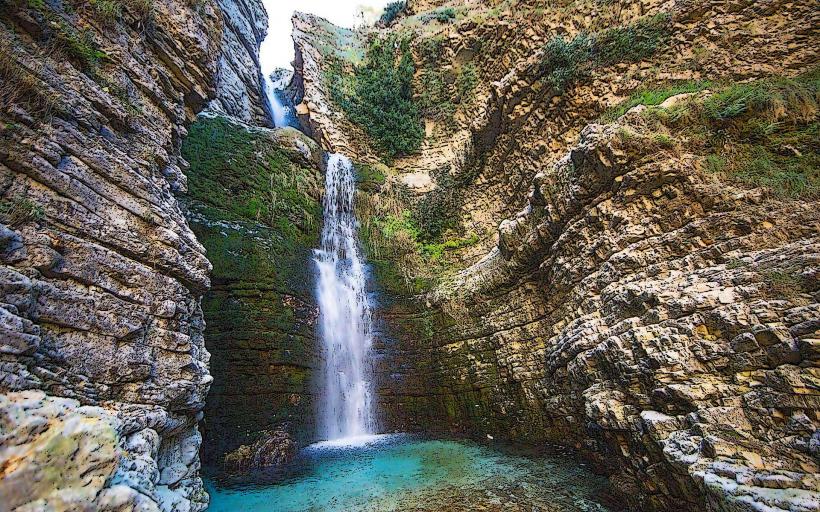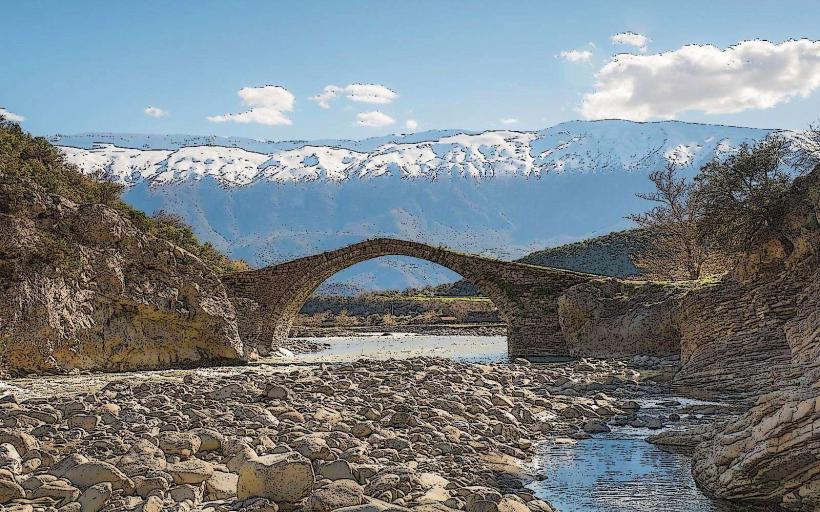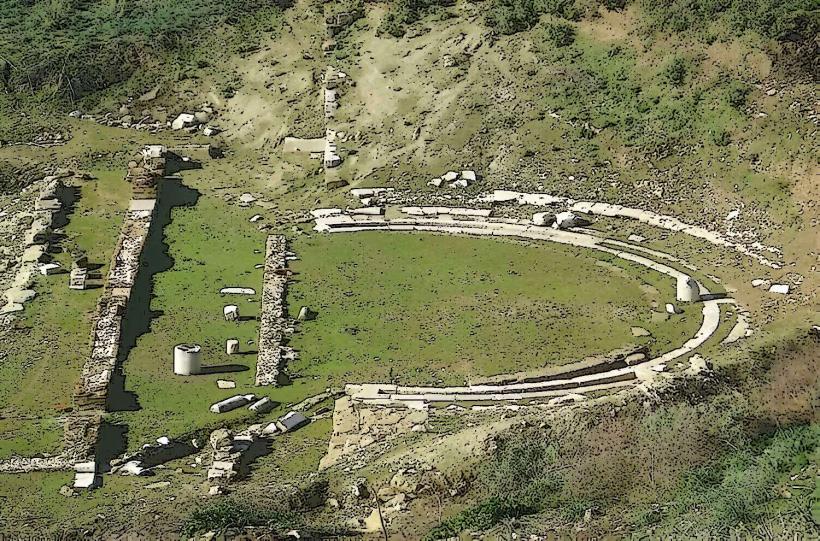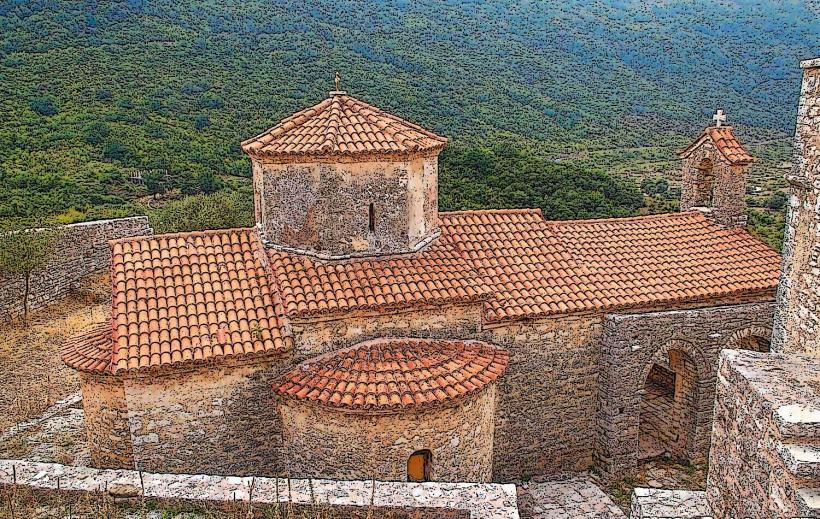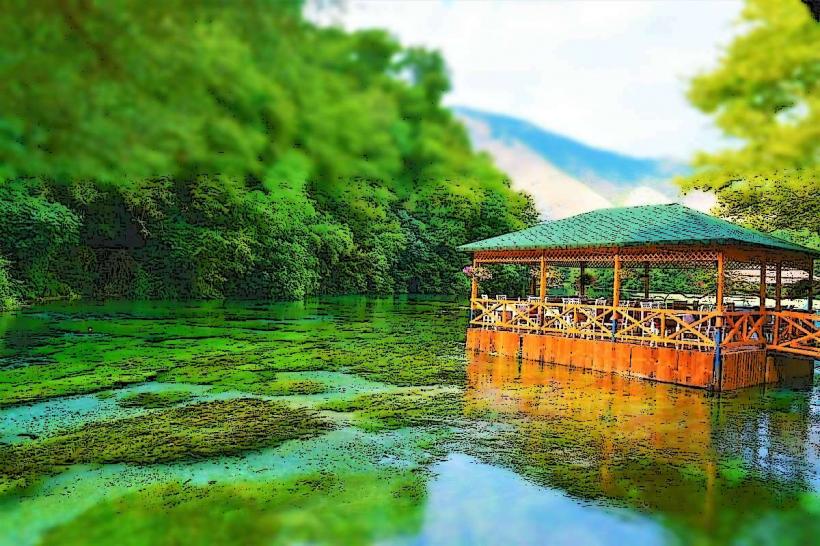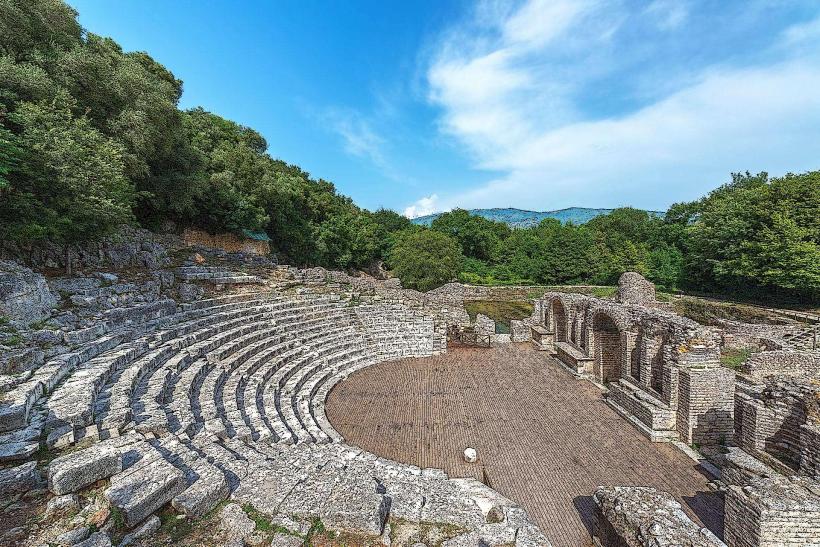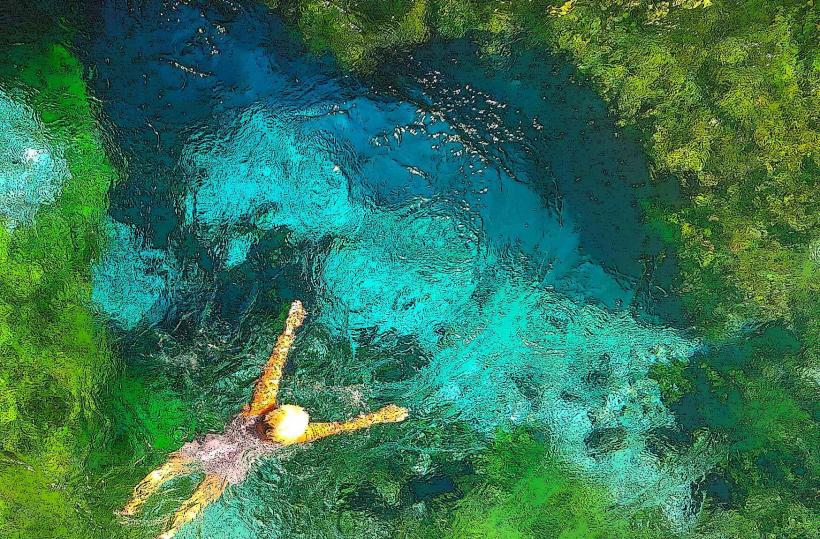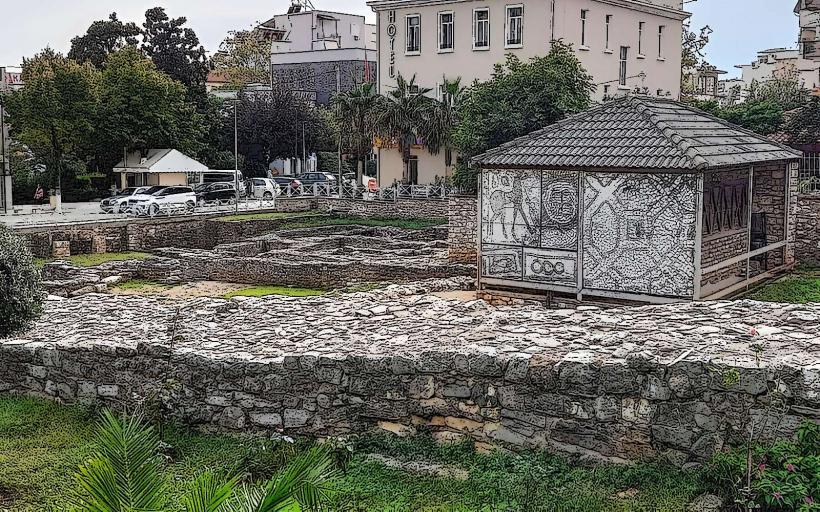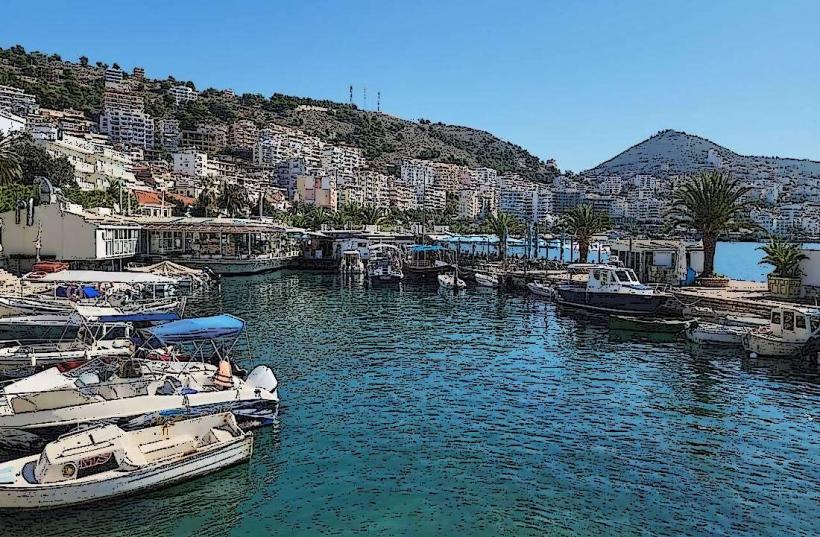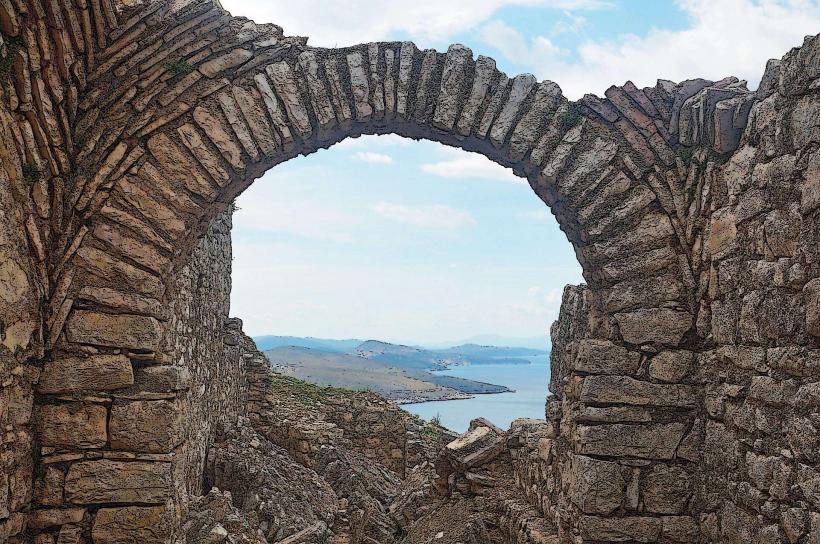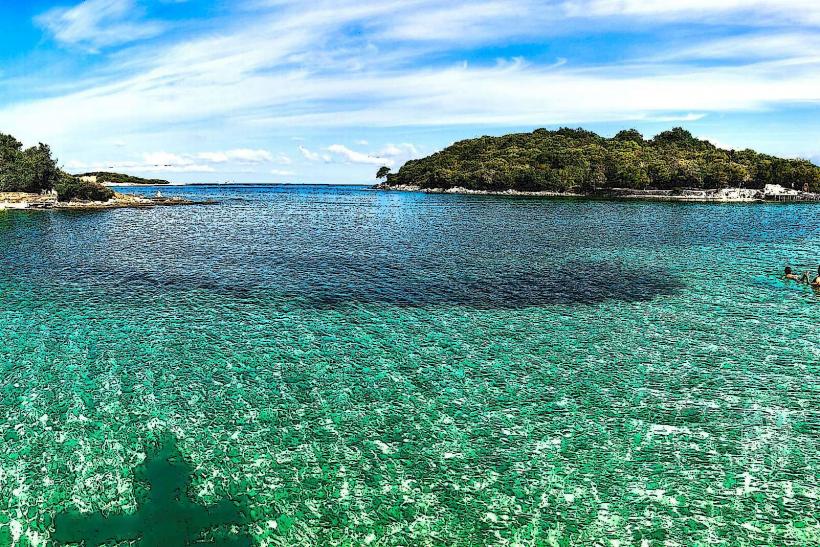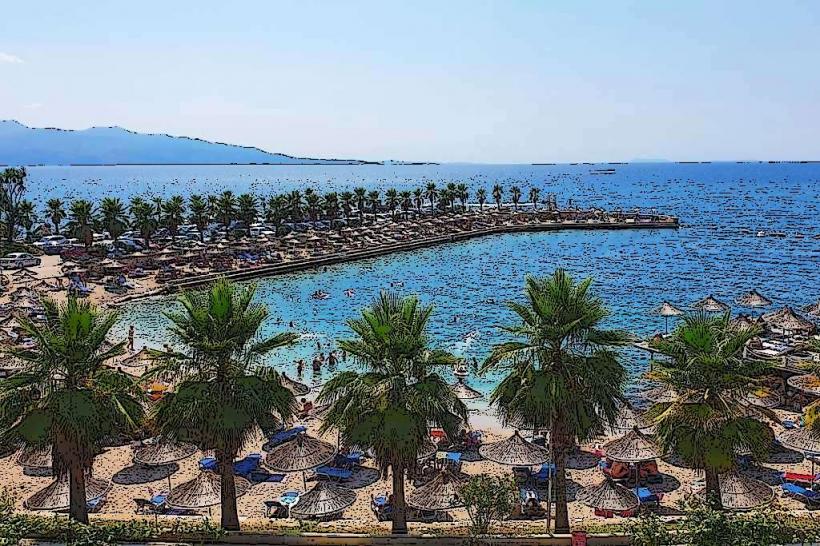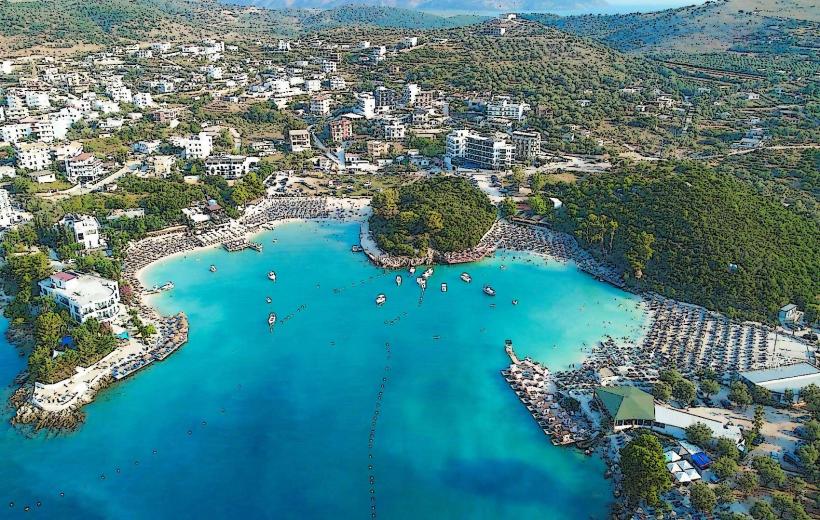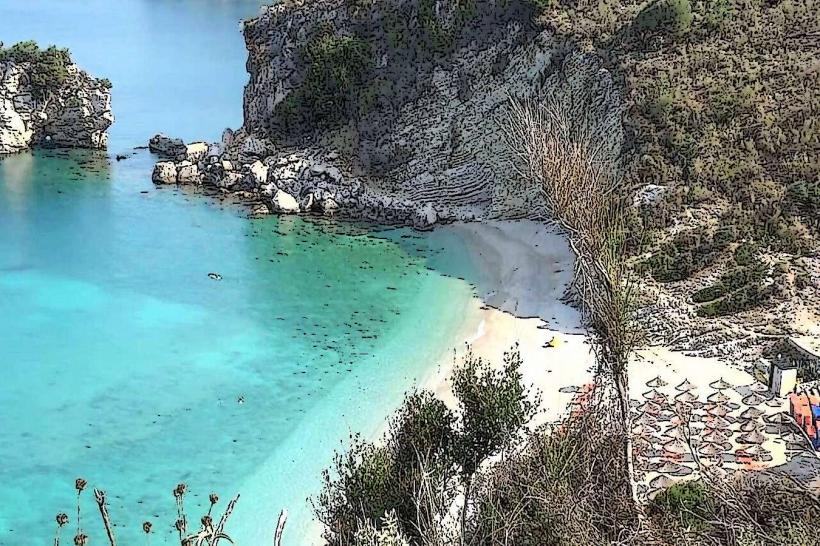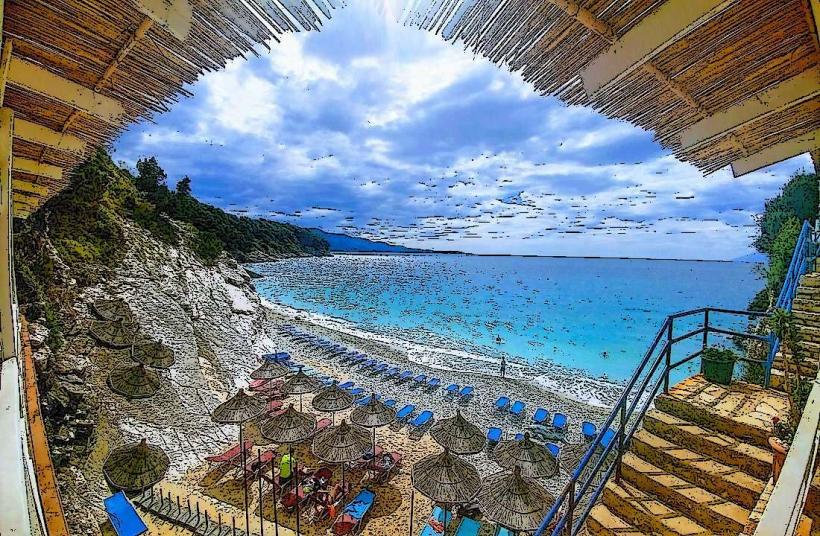Information
Landmark: Tekke of FrashërCity: Sarande
Country: Albania
Continent: Europe
The Tekke of Frashër, located near the town of Përmet in southern Albania, is a significant religious and cultural site associated with the Bektashi Order, a mystical Islamic Sufi sect. The tekke is revered as a spiritual center and a symbol of Albania’s rich cultural and religious diversity. It also holds historical importance as a site of national pride due to its connection with the Frashëri brothers, prominent figures in the Albanian National Awakening.
Geographic Location:
- Region: The tekke is situated in the village of Frashër, approximately 35 kilometers (22 miles) east of Përmet, nestled in the scenic landscape of the Dëshnica Valley.
- Setting: It is surrounded by rolling hills, verdant pastures, and traditional stone houses, making it a tranquil retreat steeped in spirituality and history.
Historical Background:
Foundation:
- The Tekke of Frashër was established in the 18th century during the Ottoman era as part of the Bektashi spiritual tradition.
- It served as a religious, cultural, and educational hub for the local community and followers of the Bektashi faith.
Role in Albanian Nationalism:
- The tekke became a center for the dissemination of Albanian nationalist ideas in the 19th century, especially during the Rilindja Kombëtare (Albanian National Awakening).
- The Frashëri brothers—Abdyl, Naim, and Sami Frashëri—who were influential figures in Albanian literature, politics, and education, had close ties to the tekke and the village of Frashër.
Destruction and Reconstruction:
- The tekke was destroyed during the communist era, as religious practices were banned in Albania.
- After the fall of communism in 1990, the tekke was rebuilt and restored, once again becoming a site of pilgrimage and cultural heritage.
Religious and Cultural Significance:
Bektashi Order:
- The Bektashi faith emphasizes tolerance, equality, and spiritual enlightenment, making it a unique and inclusive Islamic sect.
- The Tekke of Frashër serves as a gathering place for Bektashi adherents, especially during religious celebrations like Ashura and the annual Bektashi pilgrimage.
Symbol of Unity:
- The tekke represents a bridge between Albania’s religious and national identities, promoting harmony and mutual respect among different faiths.
Architecture:
Tekke Complex:
- The restored tekke includes a main prayer hall, guest rooms, and a courtyard, blending traditional Ottoman and Albanian architectural styles.
- The interiors are adorned with religious inscriptions and ornamental decorations, reflecting the spiritual significance of the site.
Tombs (Tyrbes):
- The tekke houses the tombs of notable Bektashi leaders and spiritual figures, attracting pilgrims who seek blessings and pay their respects.
Natural Setting:
- The surrounding landscape adds to the serenity of the tekke, with lush greenery, flowing streams, and panoramic views of the valley.
The Frashëri Brothers:
- Abdyl Frashëri:
- A political leader and activist, he played a key role in the League of Prizren (1878), advocating for Albania’s autonomy within the Ottoman Empire.
- Naim Frashëri:
- Known as the national poet of Albania, he wrote extensively about freedom, love for the homeland, and religious tolerance. His works are integral to Albanian literature.
- Sami Frashëri:
- A prominent intellectual and reformist, he contributed to the modernization of Albanian language and education. His works include dictionaries, encyclopedias, and philosophical texts.
Activities and Highlights:
Pilgrimage:
- The tekke is a site of pilgrimage for Bektashi followers and visitors interested in exploring Albania’s religious diversity.
Cultural Exploration:
- Learn about the Bektashi faith, Albanian nationalism, and the contributions of the Frashëri brothers to the country’s cultural and political history.
Scenic Walks:
- The picturesque surroundings offer opportunities for hiking, photography, and enjoying the natural beauty of the Dëshnica Valley.
Practical Information:
Getting There:
- The tekke is accessible by car or local transportation from Përmet, with scenic routes leading through traditional villages and mountain landscapes.
Best Time to Visit:
- Spring and autumn offer the most pleasant weather, with vibrant greenery and mild temperatures enhancing the experience.
Guided Tours:
- Local guides provide insights into the history, architecture, and spiritual significance of the site.
Nearby Amenities:
- Traditional guesthouses and restaurants in Përmet and Frashër village offer authentic Albanian cuisine and hospitality.
Nearby Attractions:
Thermal Springs of Bënja:
- Famous for their therapeutic waters and natural beauty, these springs are a short drive from Përmet.
Langarica Canyon:
- A stunning natural canyon offering hiking, river exploration, and breathtaking views.
Church of Leusë:
- A 17th-century Orthodox church near Përmet, known for its wooden iconostasis and frescoes.
Mount Tomorr:
- A sacred mountain for Bektashi followers, hosting the annual pilgrimage to the shrine of Abaz Ali.
Cultural and Historical Preservation:
- The Tekke of Frashër is protected as a national cultural monument, ensuring its preservation as a symbol of Albania’s spiritual and historical heritage.
- Efforts by the Bektashi community and local authorities focus on maintaining the site and promoting it as a destination for cultural tourism.
Conclusion:
The Tekke of Frashër is more than a religious monument—it is a beacon of Albania's cultural identity, resilience, and spiritual richness. Whether you are drawn by its historical ties to the Frashëri brothers, the teachings of the Bektashi faith, or the serene beauty of its surroundings, a visit to this tekke offers a profound and memorable experience.

